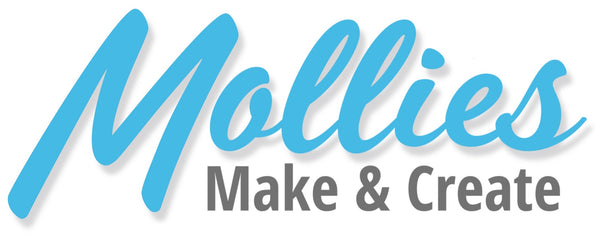[title]
[message]Mollies DIY Blog

Different types of rivets for leathercraft
By understanding the differences between double cap rivets, single cap rivets, rivet & burrs, semi-tubular rivets, and rapid rivets, DIY enthusiasts can choose the most suitable option for their specific...
Different types of rivets for leathercraft
By understanding the differences between double cap rivets, single cap rivets, rivet & burrs, semi-tubular rivets, and rapid rivets, DIY enthusiasts can choose the most suitable option for their specific...

Cleaning Leather with Saddle Soap
If you want to give the leather some extra protection, you can use a leather conditioner after using saddle soap. Follow the instructions.
Cleaning Leather with Saddle Soap
If you want to give the leather some extra protection, you can use a leather conditioner after using saddle soap. Follow the instructions.

The Magic of Beeswax: Thread coating
Find out how beeswax makes the thread of your handsewn leather projects stronger and look more professional. Its a cheap and simple process to wax your own threads at home.
The Magic of Beeswax: Thread coating
Find out how beeswax makes the thread of your handsewn leather projects stronger and look more professional. Its a cheap and simple process to wax your own threads at home.

Choosing the Right Leather Weight
Confidently tailor your leathercraft project to the ideal weight by using this handy guide on what thickness (weight) of leather to use.
Choosing the Right Leather Weight
Confidently tailor your leathercraft project to the ideal weight by using this handy guide on what thickness (weight) of leather to use.

Ivan Tech Tip: Use & Care for Edge Bevelers
Any time when you are working with stiff veg-tanned or bridle leather, edge bevelers are used to remove that hard leather corners so you can finish edge with slicker or other finishes...
Ivan Tech Tip: Use & Care for Edge Bevelers
Any time when you are working with stiff veg-tanned or bridle leather, edge bevelers are used to remove that hard leather corners so you can finish edge with slicker or other finishes...

🎥 How to instal decorative spots and studs
Whether you're into making belts, wallets, or bags, spots or studs can make your creations stand out. In this guide, we'll talk about how to install them, with our without a...
🎥 How to instal decorative spots and studs
Whether you're into making belts, wallets, or bags, spots or studs can make your creations stand out. In this guide, we'll talk about how to install them, with our without a...

Leathercraft: What hole size for button studs?
Button posts are very easy to instal and use. Here is a handy table to working out the size of the hole and split, or which button hole punch you...
Leathercraft: What hole size for button studs?
Button posts are very easy to instal and use. Here is a handy table to working out the size of the hole and split, or which button hole punch you...

Choosing the Right Thread for Leathercrafting
Selecting the right thread is a crucial step in achieving success in leathercrafting. Each type of thread has its unique characteristics, and the choice depends on the specific requirements of...
Choosing the Right Thread for Leathercrafting
Selecting the right thread is a crucial step in achieving success in leathercrafting. Each type of thread has its unique characteristics, and the choice depends on the specific requirements of...

🎥 A guide to picking the right Press Snaps
In this guide, we'll delve into the world of press snaps, focusing on Line 16 Sigma Snaps, Glove Snaps, Line 20 Snaps, and Line 24 Snaps, and help you choose...
🎥 A guide to picking the right Press Snaps
In this guide, we'll delve into the world of press snaps, focusing on Line 16 Sigma Snaps, Glove Snaps, Line 20 Snaps, and Line 24 Snaps, and help you choose...
Monthly Upholstery Tip Series
View all-

Upholstery Tip #22: Fold the Ends of Your Webbing
Antonia MarinoLearn about a tiny but very important detail when it comes to folding ends of your webbing — which will immensely improve the standard of your upholstery job. Follow these...
Upholstery Tip #22: Fold the Ends of Your Webbing
Antonia MarinoLearn about a tiny but very important detail when it comes to folding ends of your webbing — which will immensely improve the standard of your upholstery job. Follow these...
-

Upholstery Tip #21: Don't precut your webbing
Antonia MarinoWhen working with upholstery webbing, avoid pre-cutting it into equal lengths. This approach is actually unnecessary, time-consuming and wasteful. Upholsterers have a far more efficient method that speeds up the process and...
Upholstery Tip #21: Don't precut your webbing
Antonia MarinoWhen working with upholstery webbing, avoid pre-cutting it into equal lengths. This approach is actually unnecessary, time-consuming and wasteful. Upholsterers have a far more efficient method that speeds up the process and...
-

Upholstery Tip #20: Webbing Chair Backs & Arms
Antonia MarinoWhen it comes to webbing on the back of a chair or inside arms and wings, it’s a little different from the seat. Unlike seats, where you often weave horizontal...
Upholstery Tip #20: Webbing Chair Backs & Arms
Antonia MarinoWhen it comes to webbing on the back of a chair or inside arms and wings, it’s a little different from the seat. Unlike seats, where you often weave horizontal...



